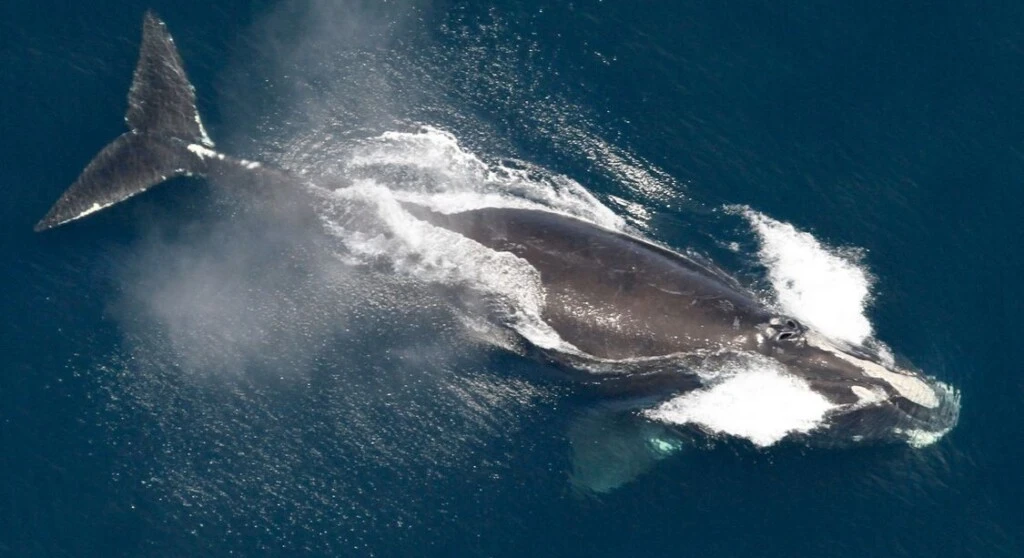North Atlantic Right Whale Numbers Rise After a Year Without Deaths
For the first time in years, scientists studying the North Atlantic right whale are celebrating a hopeful milestone: a full year without a single recorded death — and the addition of four new mothers to the breeding population.
According to the North Atlantic Right Whale Consortium, 11 calves were born over the past year, bringing the total population to approximately 384 individuals. The modest but meaningful increase follows strengthened efforts to reduce ship collisions and fishing gear entanglements — two of the species’ most persistent threats.
Once hunted nearly to extinction in the 18th century, right whales have been protected under federal law since the global commercial whaling ban of 1982. Despite those protections, recovery has been painfully slow compared to other baleen whales, such as humpbacks or blues.
Still, experts say the past year offers rare good news.
“The slight increase in the population estimate, coupled with no detected mortalities and fewer detected injuries than in recent years, leaves us cautiously optimistic,” said Heather Pettis, the consortium’s chairwoman. “But we know this population can change direction very quickly.”
Researchers note that the new mothers include both first-time and returning whales, with some experienced females giving birth sooner between calves — an encouraging sign for future reproduction.
The whales migrate each year from breeding areas off Florida and Georgia to the cold feeding grounds of New England and Atlantic Canada. Conservation measures in these regions, such as seasonal fishing restrictions and speed limits for ships, have been critical in reducing threats.
Philip Hamilton, a senior scientist at the New England Aquarium’s Anderson Cabot Center for Ocean Life, said the steady, slow growth reflects those protections beginning to work.
“If we can maintain even a modest annual increase, it will mean real recovery,” Hamilton said. “The challenge is making sure we can sustain it.”
While the population remains critically endangered, the latest data offers a glimmer of hope — proof that with continued vigilance and cooperation, one of the ocean’s most imperiled giants might finally be turning a corner.
